Perform ARIMA Model Residual Diagnostics Using Econometric Modeler App
This example shows how to evaluate ARIMA model assumptions by
performing residual diagnostics in the Econometric Modeler app. The data set, which
is stored in Data_JAustralian.mat, contains the log quarterly
Australian Consumer Price Index (CPI) measured from 1972 and 1991, among other time
series.
Import Data into Econometric Modeler
At the command line, load the Data_JAustralian.mat data
set.
load Data_JAustralianAt the command line, open the Econometric Modeler app.
econometricModeler
Alternatively, open the app from the apps gallery (see Econometric Modeler).
Import DataTimeTable into the app:
On the Econometric Modeler tab, in the Import section, click the Import button
 .
.In the Import Data dialog box, in the Import? column, select the check box for the
DataTimeTablevariable.Click Import.
The variables, including PAU, appear in the
Time Series pane, and a time series plot containing all
the series appears in the Time Series Plot(EXCH) figure
window.
Create a time series plot of PAU by double-clicking
PAU in the Time Series
pane.
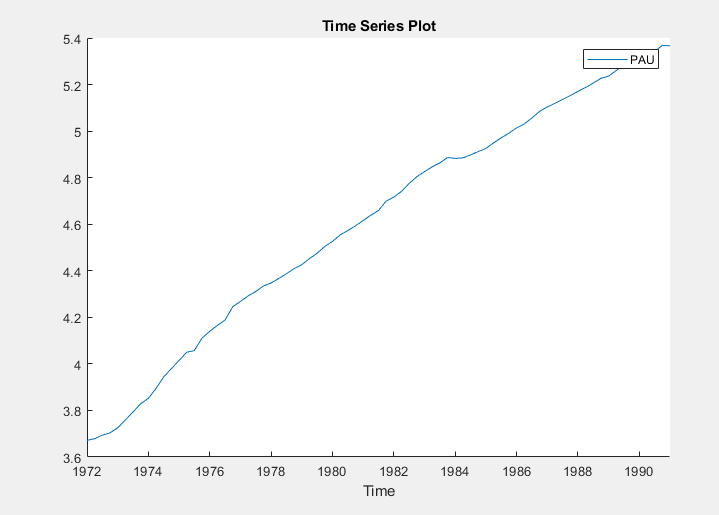
Specify and Estimate ARIMA Model
Estimate an ARIMA(2,1,0) model for the log quarterly Australian CPI (for details, see Implement Box-Jenkins Model Selection and Estimation Using Econometric Modeler App).
In the Time Series pane, select the
PAUtime series.On the Econometric Modeler tab, in the Models section, click ARIMA.
In the ARIMA Model Parameters dialog box, on the Lag Order tab:
Set the Degree of Integration to
1.Set the Autoregressive Order to
2.

Click Estimate.
The model variable ARIMA_PAU appears in the
Models pane, its value appears in the
Preview pane, and its estimation summary appears in the
Model Summary(ARIMA_PAU) document.
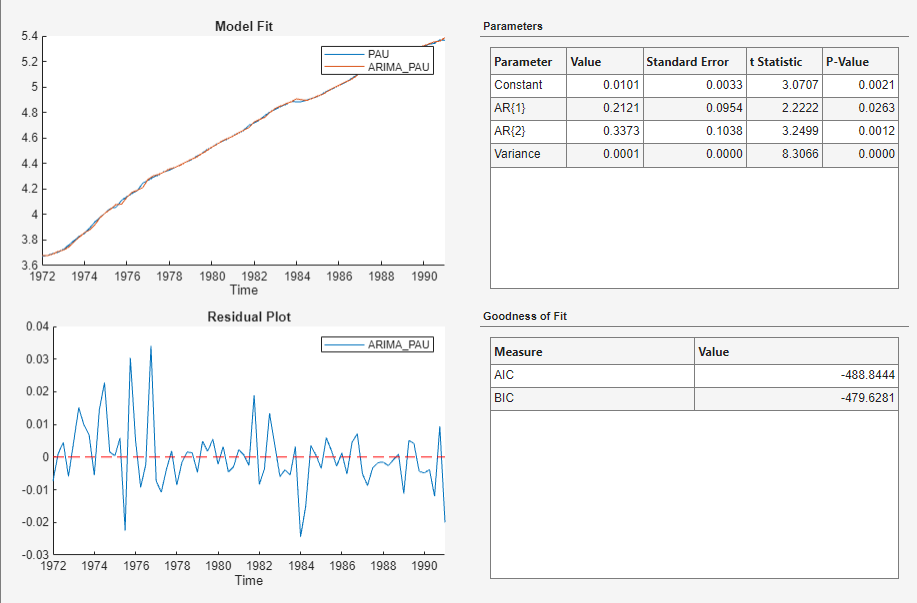
In the Model Summary(ARIMA_PAU) document, the Residual Plot figure is a time series plot of the residuals. The plot suggests that the residuals are centered at y = 0 and they exhibit volatility clustering.
Perform Residual Diagnostics
Visually assess whether the residuals are normally distributed by plotting their histogram and a quantile-quantile plot:
Close the Model Summary(ARIMA_PAU) document.
With
ARIMA_PAUselected in the Models pane, on the Econometric Modeler tab, in the Diagnostics section, click Residual Diagnostics > Residual Histogram.Click Residual Diagnostics > Residual Q-Q Plot.
Inspect the histogram by clicking the Histogram(ARIMA_PAU) figure window.

Inspect the quantile-quantile plot by clicking the QQPlot(ARIMA_PAU) figure window.
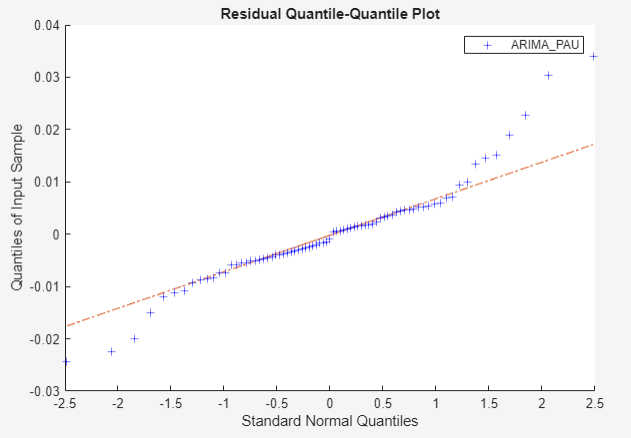
The residuals appear approximately normally distributed. However, there is an excess of large residuals, which indicates that a t innovation distribution might be a reasonable model modification.
Visually assess whether the residuals are serially correlated by plotting
their autocorrelations. With ARIMA_PAU selected in
the Models pane, in the Diagnostics
section, click Residual Diagnostics >
Autocorrelation Function.
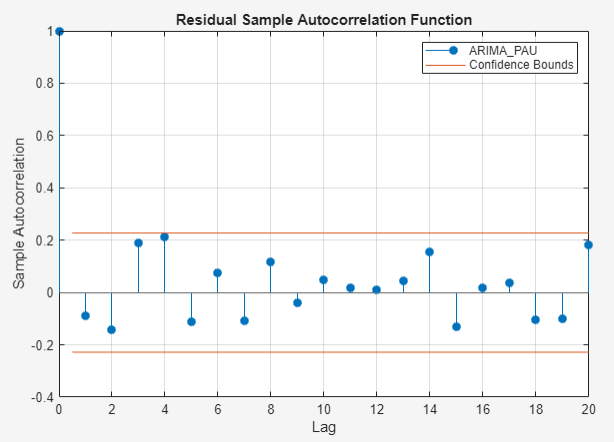
All lags that are greater than 0 correspond to insignificant autocorrelations. Therefore, the residuals are uncorrelated in time.
Visually assess whether the residuals exhibit heteroscedasticity by plotting
the ACF of the squared residuals. With ARIMA_PAU
selected in the Models pane, click the
Econometric Modeler tab. Then, click the
Diagnostics section, click Residual
Diagnostics > Squared Residual
Autocorrelation.
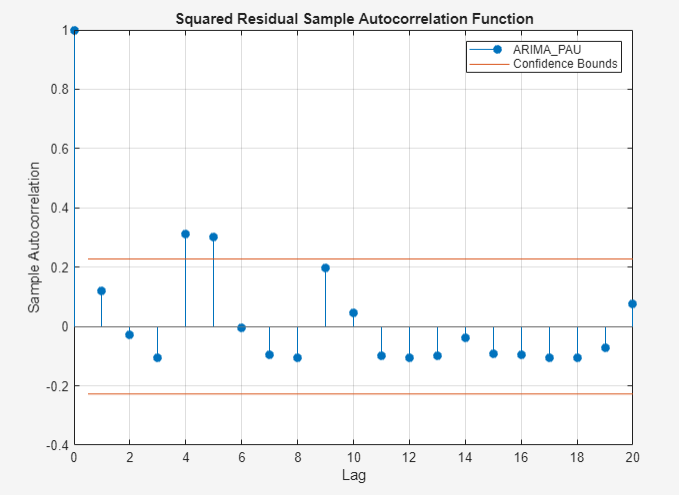
Significant autocorrelations occur at lags 4 and 5, which suggests a composite
conditional mean and variance model for PAU.
See Also
Apps
Objects
Functions
Topics
- Infer Residuals for Diagnostic Checking
- Perform GARCH Model Residual Diagnostics Using Econometric Modeler App
- Implement Box-Jenkins Model Selection and Estimation Using Econometric Modeler App
- Specify t Innovation Distribution Using Econometric Modeler App
- Creating ARIMA Models Using Econometric Modeler App